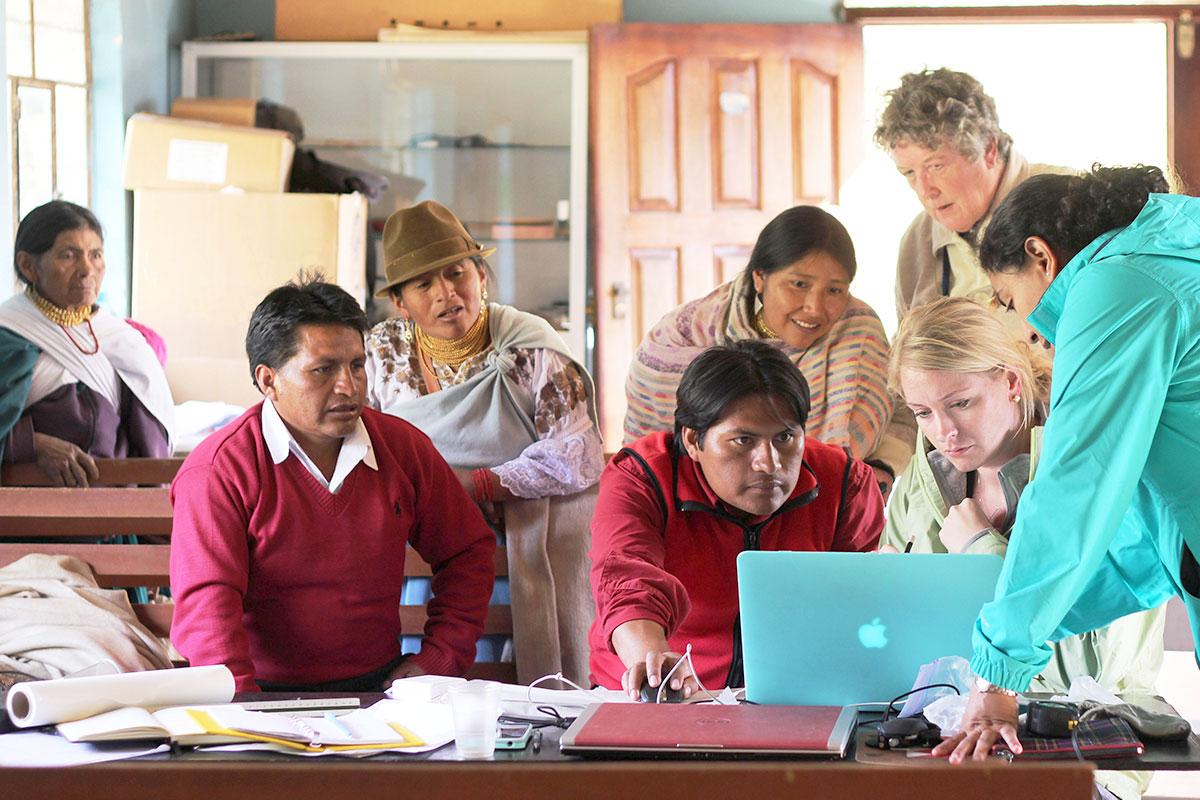
It is 4:42 a.m. I wake up in an orphanage in south- eastern India. Though tired from yesterday’s EMI project work, I cannot remain asleep as a mosque’s siren signals the start of Ramadan fasting. Wide awake, I lie in bed and listen to the other sounds around me. A Hindu neighbour rings a tiny bell as he chants his morning prayers at the family shrine. A vendor shouts the names of fruits for sale. A rooster crows. Without warning, a teenage girl slips silently past the curtain that functions as the door to my room and bows at my bedside with a tray of hot tea.
Every day in India reminds me that this place is different from the America of my childhood. Yet our work with EMI begs the question, just how different is it? How does living and working in a radically different culture affect design? Isn’t a building still a building? At the end of the day, aren’t all people really the same inside? Doesn’t the bond of Christ bridge the gap within our culturally diverse teams and the clients we serve so that we don’t have to worry about differences?
The What
Behaviours and artifacts
Accessible to the senses
Observable
Explicit
Taught
Conscious
The Why
Attitudes, beliefs, expectations, values, assumptions
Intangible
Not directly observable
Implicit
Caught
Subconscious
Every traveller quickly learns that people from other nations eat different foods, wear different clothes, and speak different languages. But culture runs much deeper. As with icebergs, the greater mass of any culture lies beneath the surface, under the waves. We who serve with EMI must become adept at recognizing these iceberg s and the essential aspects of culture which lie below the waterline.
Anthropologist Edward T. Hall first developed the iceberg concept in 1976 as a way to understand human societies. He explained that the parts of culture which we can observe with our senses—clothes, food, gestures, music, etc.—are just the tip of the iceberg. You might call these the What. Above-the-water concepts are explicitly passed on by other members of that culture, as when I teach my toddler when to wear shoes or use her “indoor voice.” Since these aspects of culture are consciously learned, they are also more easily recognized and changed. Thus, on a project trip we might learn to eat spicy food, sing a Spanish song, or bow rather than shake hands.
But the visible, above-the-water part of an iceberg indicates an invisible and much greater section below. These below-the-water aspects of culture are, by far, the more important and more influential parts. They include attitudes and beliefs, values, expectations, and assumptions—the essence of worldview. The below-the-water parts of cultures can be called the Why. Since these generally subconscious components of culture are caught by watching those around us more than they are explicitly taught, they are much harder to identify and change. Most of us have never stopped to consider our own under-the-water culture, let alone another’s.
So how can we begin to recognize the cultural icebergs around us? One effective method is to look for “ripples.” Just as a disturbance on top of the water can indicate something submerged beneath, it is possible to use what you can directly observe to lead toward what you cannot. Sirens do not tend to sound at 4:42 a.m. unless there is a good reason. That’s a ripple. When you hear the What, start looking for the Why. Let’s look at some cultural examples below. What can the visible or audible cues around us tell us about a people’s values, beliefs, assumptions, and expectations?
The What
My toddler is learning to wear shoes at specific times & places, and to speak more quietly inside than out.
The Why
What am I implicitly teaching her about cleanliness, respect, and notions of space?
The What
Muslims fast during the month of Ramadan.
The Why
How do Muslims’ beliefs about God, sin, and salvation affect when and what they eat?
The What
The teenage girl at the orphanage feels free, perhaps even obligated, to enter my room without knocking at 5:00 a.m.
The Why
What are her beliefs about the values of privacy, status, and hospitality?
Remarkably, even when we recognize differences in terms of religion, food, language, and dress, it is still easy to proceed with the design work relatively unaffected—as if survey maps, buildings, and water systems exist apart from culture. It is tempting to believe that visible differences are a façade, and that people are really the same deep down. Thus it follows that good design should be carried out in basically the same way around the world. If we persist in this assumption, however, we run the risk of making significant errors in both the process and products of our design.
Consider a few observations, based on real EMI project trips. What might these above-the-water ripples indicate about the deeper culture of our teammates, clients, and host countries?
Visible
HVAC, Materials, Site layout, Structures, Water & septic systems
Invisible
Tolerance of risk
Ideas of beauty & status
Beliefs about how wealth should be acquired, distributed, & displayed
Age & gender separation, role of children/youth/elderly
In-the-moment, historical, & future-orientation
Beliefs about food prep, eating, hygiene, waste
Ideas of family, church, community
Importance of face and directness
Beliefs about what honours God
Ideas of privacy, personal space
Ideas of fate & personal control
Ideas of comfort and sacrifice
Ideas of clean vs. dirty
Visible
In the Sunday church service, the team observes that men and women sit on opposite sides of the room with a buffer space of 3-4 feet down the centre of the hall.
Invisible
How does this culture preserve the modesty and dignity of both genders? What do they believe are the proper roles for men and women? How will this affect their values & expectations for a building or campus design?
Visible
Overflowing sewage on the campus interferes with training events, but the ministry leadership state they are “unaware of any problems” at the site.
Invisible
What might this culture believe about covering shame? Which would they consider the bigger issue—leaking sewage or loss of face? How will these values affect their reception of design “solutions” from a team of trouble-shooting engineers?
Visible
The lead architect gives a computer presentation of the team’s work so far. The client has little to say in response except “It looks so beautiful!”
Invisible
What might this client believe about status, respect, and computer technology? If there was something he didn’t like or agree with, would he feel free to express himself? How might someone from that culture communicate something negative?



When we do the hard work of identifying and understanding the cultural icebergs on our project trips, the rewards can be substantial: Smoother team dynamics, better communication with the client, and greater understanding of the needs of the ministry. These result in more appropriate ideas and an increased likelihood that the project will be built as designed. Most of all, recognizing the iceberg is part of loving our neighbour cross-culturally, and that honours God.